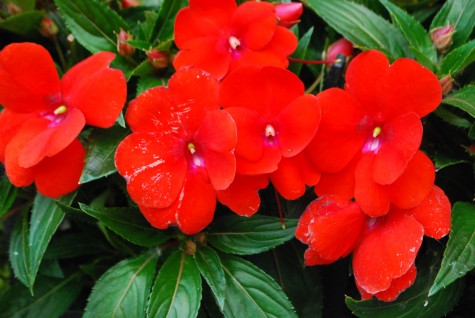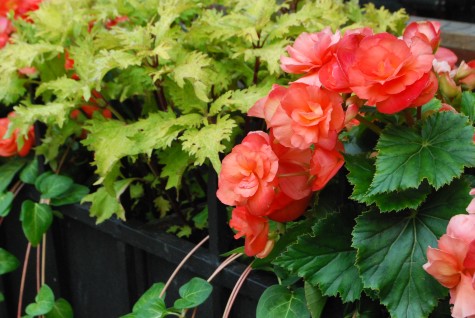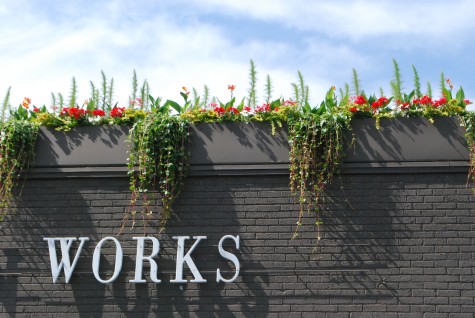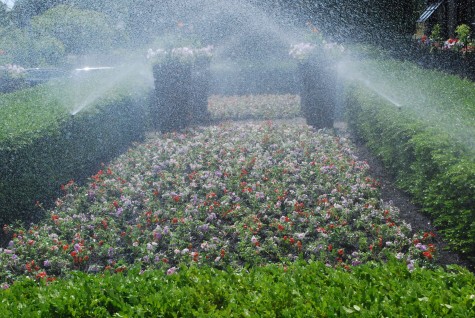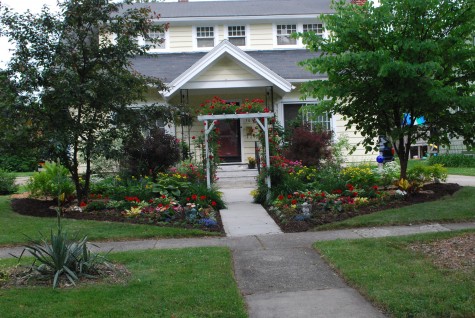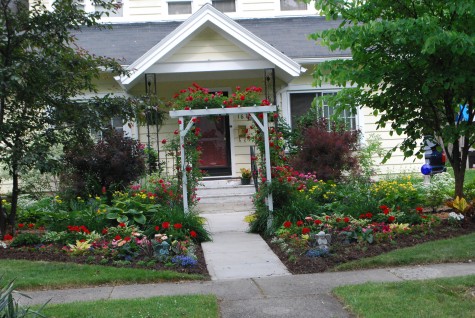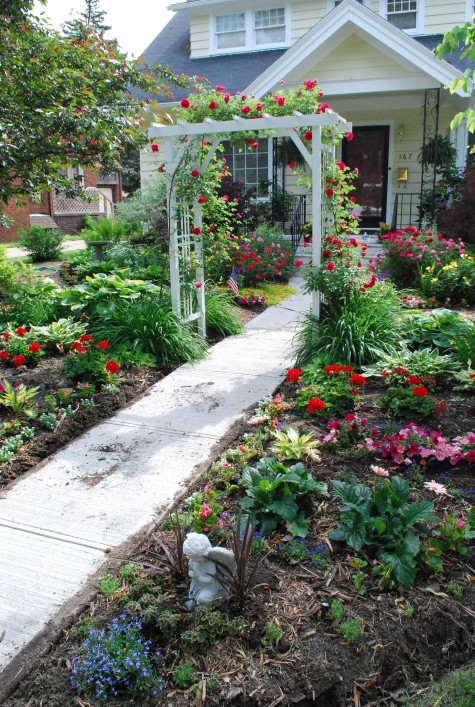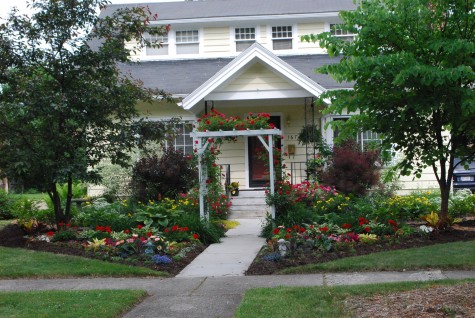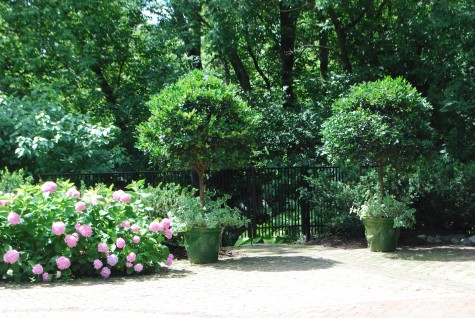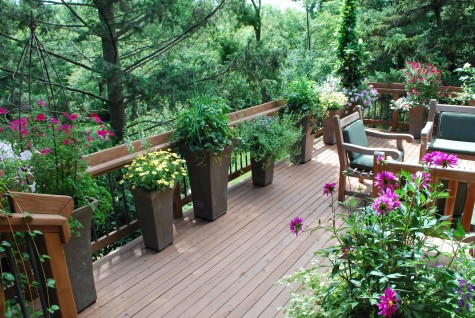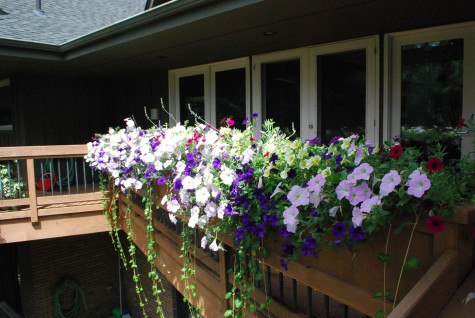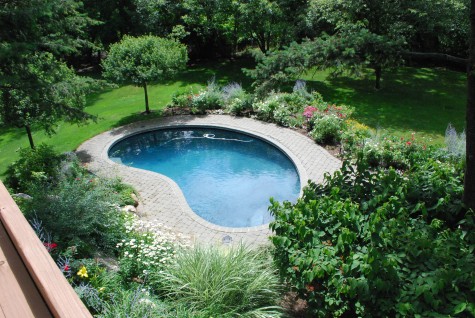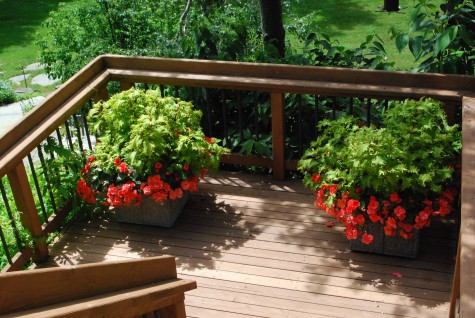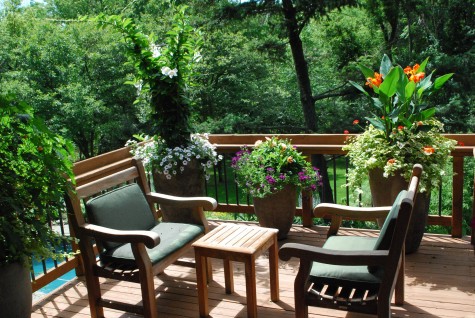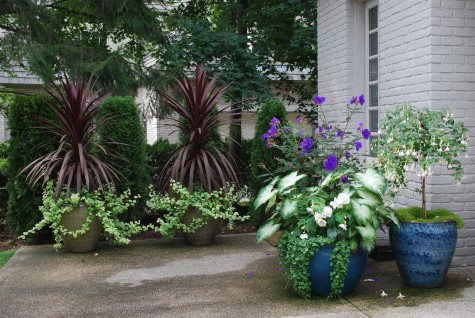 What makes dark leaved plants so irresistable? Their relative rarity attracts the eye in an instant. Of all of the thousands of green leaved plants in my garden, I have no plants with “other than green” leaves. Were I to plant a red-leaved plant there, it would attract attention. A red-leaved Japanese maple stands out from the crowd by virtue of its color alone-never mind that it is a tree with many virtues. Red leaves can create excitement in a visually sleepy place; the color is unexpected. Though I would not be inclined to indroduce red leaved plants into my landscape, I like them in containers. These old red leaved spikes provide a dramatic accent to this grouping of pots. The choice of lime licorice as an underplanting reflects my general rule-if I use dark leaved plants in a container, I stay away from green leaved companion plants.
What makes dark leaved plants so irresistable? Their relative rarity attracts the eye in an instant. Of all of the thousands of green leaved plants in my garden, I have no plants with “other than green” leaves. Were I to plant a red-leaved plant there, it would attract attention. A red-leaved Japanese maple stands out from the crowd by virtue of its color alone-never mind that it is a tree with many virtues. Red leaves can create excitement in a visually sleepy place; the color is unexpected. Though I would not be inclined to indroduce red leaved plants into my landscape, I like them in containers. These old red leaved spikes provide a dramatic accent to this grouping of pots. The choice of lime licorice as an underplanting reflects my general rule-if I use dark leaved plants in a container, I stay away from green leaved companion plants.
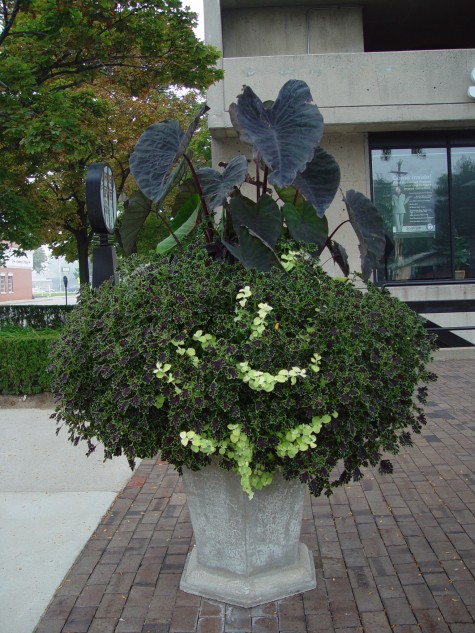 Once I make the decision to feature a plant with dark foliage, the supporting cast plants need be friendly to that color. Lime licorice verges on yellow; inky fingers coleus has a deep purple ground, with just a hint of bright green on the edges. Medium green and medium red make mud together. I like sharp, crisp, delicate and dramtic color-no mud. Big black foliage needs more black foliage to make a dramatic color statement. The rim of bright green on this Inky Fingers coleus describes its small texture-it brings all of the color to life. Medium green foliage in this container-thud.
Once I make the decision to feature a plant with dark foliage, the supporting cast plants need be friendly to that color. Lime licorice verges on yellow; inky fingers coleus has a deep purple ground, with just a hint of bright green on the edges. Medium green and medium red make mud together. I like sharp, crisp, delicate and dramtic color-no mud. Big black foliage needs more black foliage to make a dramatic color statement. The rim of bright green on this Inky Fingers coleus describes its small texture-it brings all of the color to life. Medium green foliage in this container-thud.
 This red/black foliaged hibiscus is a very strong grower. It can easily attain 6 feet in a single season. The red and lime bicolor coleus and lime licorice light up that dark color from below. I have thought on occasion to pair it with the big ruffly leaved farfugium; the contrast in texture would be great. The red and green color combination I am reluctant to try. Want an other than green foliaged scheme? Follow through with every move you make.
This red/black foliaged hibiscus is a very strong grower. It can easily attain 6 feet in a single season. The red and lime bicolor coleus and lime licorice light up that dark color from below. I have thought on occasion to pair it with the big ruffly leaved farfugium; the contrast in texture would be great. The red and green color combination I am reluctant to try. Want an other than green foliaged scheme? Follow through with every move you make.
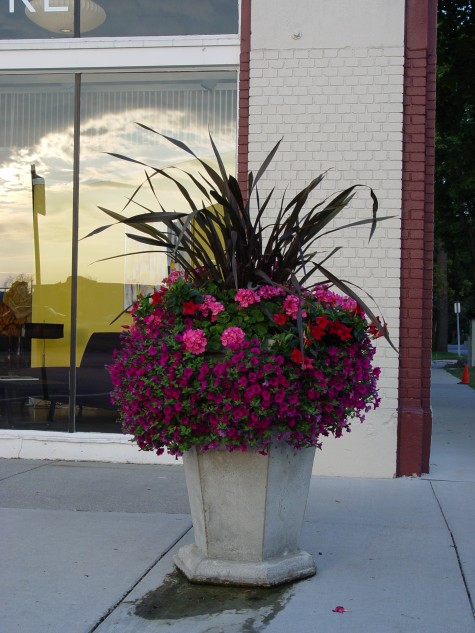 I did make an exception in this case. The strap leaved New Zealand flax, or phormium, is black leaved; perhaps there is a hint of brown. The large, bright flower heads of the peach geraniums attract the eye; its great leaves fade away into the distance. The violet petunias are so covered with blooms that the green foliage is scarcely visible. This planting is dark and dramatic.
I did make an exception in this case. The strap leaved New Zealand flax, or phormium, is black leaved; perhaps there is a hint of brown. The large, bright flower heads of the peach geraniums attract the eye; its great leaves fade away into the distance. The violet petunias are so covered with blooms that the green foliage is scarcely visible. This planting is dark and dramatic.
 This large and black leaved canna is a boldly sensational plant. It has great stature, texture, and mass-there is no missing it. The red violet and lime yellow coleus Arizona Sunset repeats that dark foliage color in a different hue, and leavens it with lime. The delicate and pale lavender petunias are a sharp contrast-all of that lavender brings out the purple in the canna leaves. The flowers have all but obliterated any view of its green foliage.
This large and black leaved canna is a boldly sensational plant. It has great stature, texture, and mass-there is no missing it. The red violet and lime yellow coleus Arizona Sunset repeats that dark foliage color in a different hue, and leavens it with lime. The delicate and pale lavender petunias are a sharp contrast-all of that lavender brings out the purple in the canna leaves. The flowers have all but obliterated any view of its green foliage.
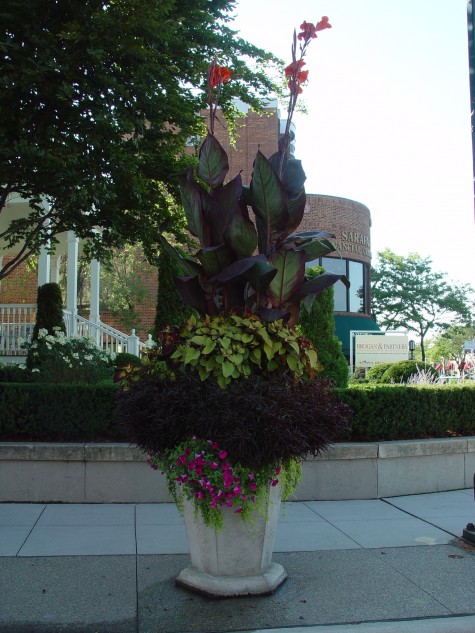 This centers of these canna leaves appear green when the sun shines through them. This made it fine for me to plant an olive green coleus with a red violet obverse next to it. The red thread leaved alternanthera appears to darken as it matures-a large mass of red leaves traps light, rather than reflecting it. The pink petunias and creeping jenny define the lower edge of the alternanthera mass. Very dark foliage benefits from some lighter company-any other color than medium green, please.
This centers of these canna leaves appear green when the sun shines through them. This made it fine for me to plant an olive green coleus with a red violet obverse next to it. The red thread leaved alternanthera appears to darken as it matures-a large mass of red leaves traps light, rather than reflecting it. The pink petunias and creeping jenny define the lower edge of the alternanthera mass. Very dark foliage benefits from some lighter company-any other color than medium green, please.
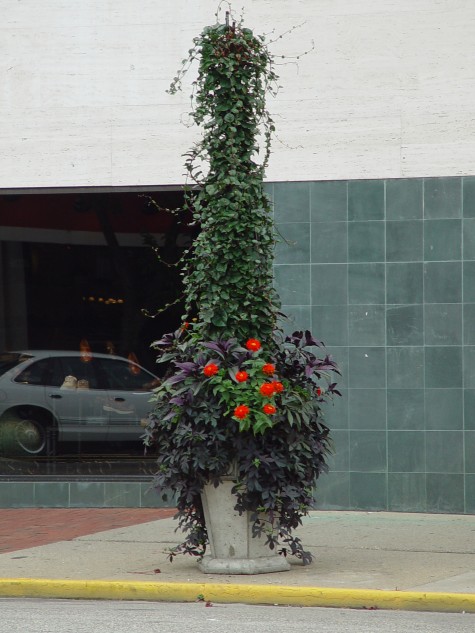 Malabar spinach has very dark green leaves which are red violet on the reverse side. The stems and knobby flowers are also dark red violet. Though I love how it climbs to great heights in just one season, I also value that dark foliage. Persian Shield and black sweet potato vine mirror that color quite well. This pot was dark up 12 feet into the sky, and just as dark, down to the ground. This made me think a big button of green-foliaged Red Sun zinnias would work.
Malabar spinach has very dark green leaves which are red violet on the reverse side. The stems and knobby flowers are also dark red violet. Though I love how it climbs to great heights in just one season, I also value that dark foliage. Persian Shield and black sweet potato vine mirror that color quite well. This pot was dark up 12 feet into the sky, and just as dark, down to the ground. This made me think a big button of green-foliaged Red Sun zinnias would work.
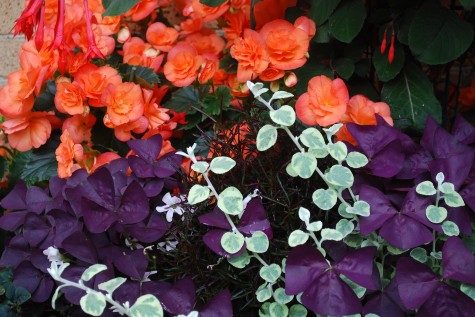
The very dark purple oxalis triangularis is one of my favorite plants. That rich dark red violet leaf-so beautiful. I especially like it with Solenia orange begonia. Very little of the green leaves of the begonia are visible-this is a study in orange and dark red violet. The varigated licorice is not your garden variety green-it looks as fresh as the description mint green suggests. The big idea here-should you choose to include dark foliaged plants in your landscape, garden, or containers, pay even more attention to the color you put with them.




